Related Research Articles
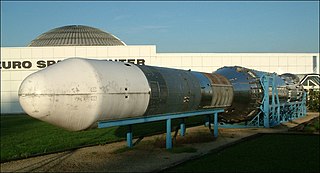
The Europa rocket was an early expendable launch system of the European Launcher Development Organisation (ELDO), which was the precursor to the European Space Agency (ESA). It was developed with the aim to delivering space access technology, and more specifically to facilitate the deployment of European-wide telecommunication and meteorological satellites into orbit.

The University of Massachusetts is the five-campus public university system and the only public research system in the Commonwealth of Massachusetts. The university system includes five campuses, and a satellite campus, with system administration in Boston and Shrewsbury. The system is accredited by the New England Association of Schools and Colleges and across its campuses enrolls 73,000 students.
Parsons School of Design, known colloquially as Parsons, is a private art and design college located in the Greenwich Village neighborhood of Lower Manhattan in New York City. It is one of the five colleges of The New School.
In the U.S. education system, magnet schools are public schools with specialized courses or curricula. "Magnet" refers to how the schools draw students from across the normal boundaries defined by authorities as school zones that feed into certain schools. Attending them is voluntary.
Early entrance to college, sometimes called early admission or early enrollment, is the practice of allowing high school students to be accelerated into college, one or more years before the traditional age of college entrance, and without obtaining a high school diploma. In some cases this is done individually. Often, however, it is done as part of a cohort acceleration program, in which many such students are accelerated into college together at the same time. These programs are usually targeted to gifted students, and may provide their students with a social support network and help in dealing with the adjustment.

The University of Puerto Rico, Río Piedras Campus, is a public research university in Río Piedras, Puerto Rico. It is the largest campus of the University of Puerto Rico system in terms of student population and it was Puerto Rico's first public university campus.
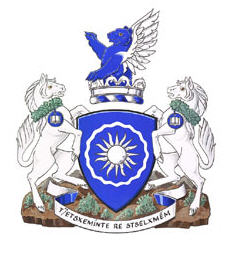
Thompson Rivers University is a public teaching and research university offering undergraduate and graduate degrees and vocational training. Its main campus is in Kamloops, British Columbia, Canada, and its name comes from the two rivers which converge in Kamloops, the North Thompson and South Thompson. The university has a satellite campus in Williams Lake, BC and a distance education division called TRU-Open Learning. It also has several international partnerships through its TRU World division.

The Pershing Center is a 4,526-seat multi-purpose arena in Lincoln, Nebraska. Although still physically in place, it is no longer in use.

The New School is a private research university in New York City. It was founded in 1919 as The New School for Social Research with an original mission dedicated to academic freedom and intellectual inquiry and a home for progressive thinkers. Since then, the school has grown to house five divisions within the university. These include the Parsons School of Design, the Eugene Lang College of Liberal Arts, The New School for Social Research, the Schools of Public Engagement, and the College of Performing Arts which consists of the Mannes School of Music, the School of Drama, and the School of Jazz and Contemporary Music. In addition, the university maintains the Parsons Paris campus and has also launched or housed a range of institutions, such as the international research institute World Policy Institute, the Philip Glass Institute, the Vera List Center for Art and Politics, the India China Institute, the Observatory on Latin America, and the Center for New York City Affairs. It is classified among "R2: Doctoral Universities – High research activity".
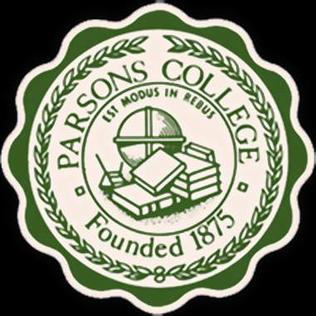
Parsons College was a private liberal arts college located in Fairfield, Iowa. The school was named for its wealthy benefactor, Lewis B. Parsons Sr., and was founded in 1875 with one building and 34 students. Over the years new buildings were constructed as enrollment expanded. The school lost its accreditation in 1948 but regained it two years later. In 1955 the school appointed Millard G. Roberts as its president and this began a period of rapid expansion with the student population rising as high as 5,000 by 1966. There was a turning point, however, in 1966 when Life magazine published an article criticizing the college and its president. Later that year the school lost its accreditation and Roberts was asked to resign as president. Enrollment quickly declined and the college floundered with $14 million in debt and closed under bankruptcy in 1973.
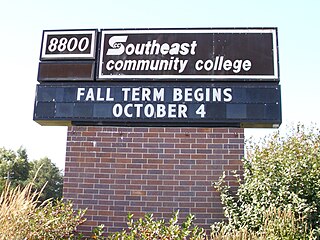
Southeast Community College (SCC) is a public community college system in the southeast portion of Nebraska.

The history of New York University begins in the early 19th century. A group of prominent New York City residents from the city's landed class of merchants, bankers, and traders established NYU on April 18, 1831. These New Yorkers believed the city needed a university designed for young men who would be admitted based on merit, not birthright or social class. Albert Gallatin, Secretary of the Treasury under Thomas Jefferson, described his motivation in a letter to a friend: "It appeared to me impossible to preserve our democratic institutions and the right of universal suffrage unless we could raise the standard of general education and the mind of the laboring classes nearer to a level with those born under more favorable circumstances." To the school's founders, the classical curriculum offered at American colonial colleges needed to be combined with a more modern and practical education. Educators in Paris, Vienna, and London were beginning to consider a new form of higher learning, where students began to focus not only on the classics and religion, but also modern languages, philosophy, history, political economy, mathematics, and physical science; so students might become merchants, bankers, lawyers, physicians, architects, and engineers. Although the new school would be non-denominational – unlike many American colonial colleges, which at the time offered classical educations centered on theology – the founding of NYU was also a reaction by evangelical Presbyterians to what they perceived as the Episcopalianism of Columbia College.
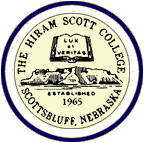
Hiram Scott College was a private liberal arts college that operated from 1965 to 1972 in Scottsbluff, Nebraska. Named after Hiram Scott (1805–1828), a fur trapper with the Rocky Mountain Fur Company who was found dead in the vicinity on his return trip from a fur expedition, the institution was one of several Midwestern colleges established by local civic leaders with the support and encouragement of Parsons College in Fairfield, Iowa. These Parsons "satellite schools" were by-products of the strong growth and apparent success of Parsons during the late 1950s and early 1960s, and all followed the "Parsons Plan" academic model developed at that school. None of the schools, however, were ultimately successful.
John F. Kennedy College was founded in 1965 in Wahoo, Nebraska, United States, one of six colleges started by small-town businessmen on the model of Parsons College in Fairfield, Iowa. The college was named after President John F. Kennedy. Due to a drop in enrollment and financial difficulties following the end of the military conscription draft in 1973, Kennedy College closed in 1975.

The College of Artesia was a private liberal arts college that operated from 1966 to 1973 in Artesia, New Mexico. It was one of several Midwestern colleges established by local civic leaders with the support and encouragement of Parsons College in Fairfield, Iowa. These Parsons "satellite schools" were by-products of the strong growth and apparent success of Parsons during the late 1950s and early 1960s, and all followed the "Parsons Plan" academic model developed at that school. None of the schools, however, was ultimately successful.
Lea College was a private liberal arts college that operated from 1966 to 1973 in Albert Lea, Minnesota, United States. Lea was one of several Midwestern colleges established by local civic leaders with the support and encouragement of Parsons College in Fairfield, Iowa. These Parsons "satellite schools" were by-products of the strong growth and apparent success of Parsons during the late 1950s and early 1960s, and all followed the "Parsons Plan" academic model developed at that school. None of the schools, however, was ultimately successful.

Midwestern College was a private liberal arts college that operated from 1965 to 1970 in Denison, Iowa. Midwestern was one of several colleges in the upper Midwest established by local civic leaders with the support and encouragement of Parsons College in Fairfield, Iowa. These Parsons "satellite schools" were by-products of the strong growth and apparent success of Parsons during the late 1950s and early 1960s, and all followed the "Parsons Plan" academic model developed at that school. None of the schools, however, were ultimately successful.
Charles City College was a private liberal arts college that operated from 1967 to 1968 in Charles City, Iowa. It was one of several Midwestern colleges established by local civic leaders with the support and encouragement of Parsons College in Fairfield, Iowa. These Parsons "satellite schools" were by-products of the strong growth and apparent success of Parsons during the late 1950s and early 1960s, and all followed the "Parsons Plan" academic model developed at that school. None of the schools, however, were ultimately successful.

Labette Community College (LCC) is a public community college in Parsons, Kansas. LCC's main campus is situated in Parsons and satellite campuses are located in Cherokee, Oswego and Pittsburg. The mascot of the school is Chris the Cardinal. The official school colors are red and white.

University City High School was a public secondary school in the University City section of West Philadelphia, Pennsylvania, United States, which operated from 1972 to 2013.
References
- Koerner, James D. (1970). The Parsons College Bubble: A Tale of Higher Education in America . New York: Basic Books, Inc. pp. 217–220.
Coordinates: 40°15′39″N96°47′22″W / 40.26083°N 96.78944°W
| This article about a university or college in Nebraska is a stub. You can help Wikipedia by expanding it. |